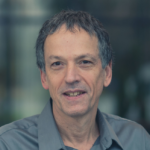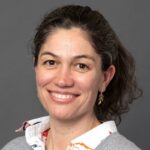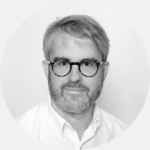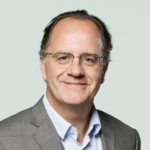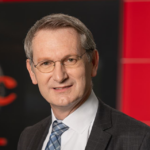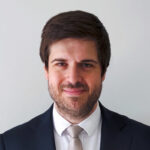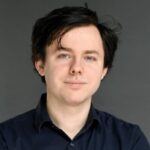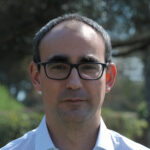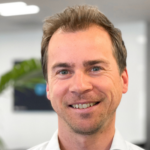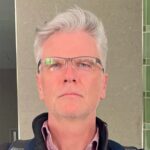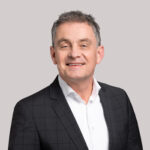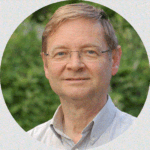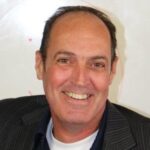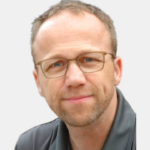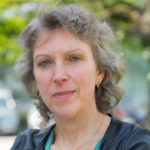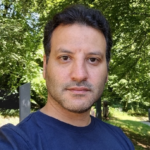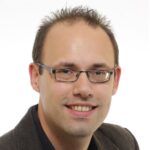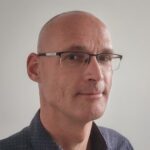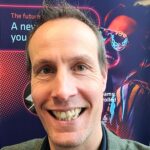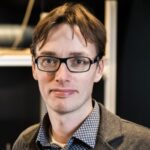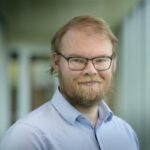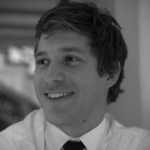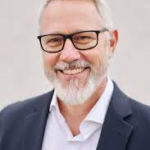Programme PIC Summit Europe 2023
Walk-in & registration
Welcome by host & Opening remarks by Ewit Roos
Harnessing light for a brighter future: exploring the potential of integrated photonics
Keynote description: Today’s smartphones surpass the power of the Apollo mission's computers. Such is the potential of scaling driven by silicon technology. Now consider that integrated photonics is named as ‘the next big thing’ in scaling. Can we even begin to imagine where that will lead us? Ilan Spillinger, EVP and CTO at imec, leverages his knowledge of integrated photonics' current state to explore future applications. Exponential growth in communication speed and computing power warrant excitement. And when photonic chips enter domains such as healthcare and agriculture, humankind can take giant leaps towards a better life.
An industrial perspective for scaling
Keynote description: The global semiconductor market has grown into a multi billion dollar industry and is expected to became a trillion dollar opportunity by 2030. Along its more than 70 years of history, semiconductors industrializating has gone through multiple cycles and has overcome technological and manufacturing challenges. Join Clara Otero Perez, Senior Director of System Solutions at NXP, as she shares some of the lessons and development challenges the semiconductor industry has encountered and how the photonics ecosystem can learn from them.
Deeptech investment landscape: Fireside chat with Rinke Zonneveld and Michael Jackson
This fireside chat dives into Europe's deep tech ambitions, with a special focus on semicon and photonics. Against the backdrop of the EU Chips Act and the pursuit of strategic autonomy, this discussion will look into the interplay of public and private capital in driving innovation. We'll explore the challenges faced by the industry a explore the various roadblocks and opportunities.
Networking Break
Moore’s law continues to drive semiconductor growth
Keynote description: Paul de Bot will discuss the growth characteristics of the semiconductor market, which is expected to reach $1T by 2030. A range of applications including smartphones, high-performance computing and automotive, increasingly benefits from the power/performance/area improvements offered by Moore’s law. This makes advanced CMOS (currently FinFET) technology by far the largest growth driver of the semiconductor market across application areas. Specific specialties like Silicon Photonics may leverage this growth, by adding value in specific sub-segments of the HPC market. As more and more computational power is embedded into single SoCs, also the I/O bandwidth requirements increase. Due to limitations of both SoC beach-front as well as SoC power, copper reaches its limits and will ultimately be replaced by optics as the means to get the data on and off chip for certain high-end HPC applications.
The Age Of Photonic IC's: Europe's Quest For Open Strategic Autonomy
Panel EU Strategy: PICs will be critical components for customers in various applications, also in Europe. With the Chips Act the EU will create together with the member states incentives to increase the semiconductor production capacity, provide funds to stimulate technology leadership, and take measures to make the chip supply chains more robust. This panel discussion will reflect on the vision of various CEOs to create a world-leading, resilient PIC supply-chain and give the political context, point out opportunities and put photonic chips into the perspective. Panel chair: Ewit Roos (PhotonDelta). Panelists: Werner Steinhoegl (European Commission), Johan Feenstra (Smart Photonics), Rudi de Winter (X-FAB), Erwin Nijsse (Dutch Ministry of Economic Affairs & Climate Policy), Tom Berendsen (European Parliament).
Wrap-up morning programme
Networking Lunch
Start of breakout sessions
Various breakout sessions will take place after lunch, divided over technology, business and application topics. Delegates can choose to attend presentations or interactive panel discussions.
Photonic Integration for LiDAR - monolithic, hybrid or discrete?
Panel chair: Boudewijn Docter (EFFECT Photonics & HTXL). Panelists: Ronald Broeke (Bright Photonics), Stanislav Aksarin (Scantinel), Bill Ring (Vector Photonics Inc.), Tobias Mueller (Aixemtech), Tim Koene (EFFECT Photonics), Douglas Aguiar (PhotonPath). Panel description: There are many different platforms in which you can design a LiDAR system. Some parts you can integrate in a PIC, others are perhaps best done with (micro-)optics. What are the trade-offs? Which gives you the best performance vs. cost vs. scalability vs. reliability? And what about the maturity of the supply chains? In this panel session we will discuss these questions with a group of well renowned experts from the industry, and make it an interactive session with the public.
Funding Photonics: investment challenges and strategies for success
Panel chairs: Ivan Stojanovic and Michael Jackson. Panelists: Chiara Greganti (VitreaLab), John Bell (HighTechXL), Joachim de Sterke (PhotonVentures), Jos Lunenberg (Surfix Diagnostics), Madhav Pulipati (Photonics Valley Corporation), Cees Links (SuperLight Photonics). Panel description: This session will dive into the investment landscape for integrated photonics by looking into the market dynamics, investment strategies and understanding the challenges together with a panel of industry experts and successful entrepreneurs. Discover firsthand experiences, learn key considerations for investors, and understand the collaborative ecosystem shaping the future of integrated photonics. Whether you're an investor seeking innovation or a startup founder aiming for growth, this session provides essential insights into the unique opportunities and challenges within the photonics industry.
Scaling artificial intelligence with integrated photonics
Presentation (technology): The increasing demands of modern computing, especially in applications such as artificial intelligence, have highlighted significant constraints in the bandwidth, scale, and energy of existing interconnects. This talk will highlight Lightmatter's Passage, a wafer scale photonic interconnect platform that addresses the problems above. Specifically, we will discuss how Passage addresses bandwidth limitations through the dense integration of photonic transmitters and receivers on a wafer scale substrate, scale through wafer-level waveguide stitching and circuit switching, and energy consumption by removing long electrical interconnects from host-ASIC to optics.
Emerging trends: Attracting & retaining your future workforce
Presentation (business): In order to be able to get the work done and to grow the industry, you need the right people with the right skills. Currently the labor market and demographic trends, together with the fast changes in skillsets required, can provide a significant challenge to find the people that you need. In this session, we’ll cover which emerging trends are currently shaping that will help you to find and retain the required talent, such as leveraging the skill-based labor market, making use of the flexible workforce, and redesigning work to attract future employees and enhance their engagement.
Cost, Performance, Usability, and Regulatory Challenges for PIC Sensing in Biomedicine
Presentation (application): This talk will discuss the unique requirements for PIC sensors as applied to biomedicine: sensors must be cost-competitive with legacy technology, while exhibiting outstanding performance and fulfilling criteria set by regulators. Opportunities beyond diagnostics including in drug discovery and development will also be highlighted, along with sustainability challenges.
photonixFAB – The EU-funded pilot line to empower photonics innovations
Presentation (technology): The photonixFAB project aims to empower photonics innovation by SMEs and large entities by providing low barrier access to both low-loss silicon nitride (SiN) and silicon-on-insulator (SOI) based photonics platforms with indium phosphide (InP) and lithium niobate (LNO) heterogenous integration capabilities. The objective is to establish a European photonics device value chain and initial industrial manufacturing capabilities. Thus, providing a path to scalable high-volume manufacturing for innovative product developers. This will strengthen the continent’s manufacturing capabilities in key emerging areas.
Spain for PICs: vision & strategy
Presentation (business): Spain has cultivated a robust photonic integrated circuit (PIC) ecosystem, emphasizing research, development, and collaboration since 2010. The nation's "PERTE Chip, Microelectrónica y Semiconductores" flagship program, launched in 2022, underscores PICs as a strategic asset. Spain's PIC journey thrives on research excellence, fostering an environment where industry players collaborate to innovate and streamline manufacturing processes. Sustainability is at the core of this vision, as PICs offer energy-efficient solutions for global resource distribution and sustainable energy challenges. Looking ahead, Spain aspires to maintain its global leadership in PIC technology through continued investment and support for innovation, ensuring a sustainable and technologically advanced future.
Transforming Industries with Integrated Photonics in Fiber Optic Sensing
Presentation (application): Discover the transformative influence of integrated photonics on the world of fiber optic sensing in this presentation by Thijs Van Leest, R&D Director of PhotonFirst. Join us as we explore the benefits of integrated photonics-based fiber optic sensing systems, showcasing real-world examples that highlight their practical applications and impact. Gain insights into how PhotonFirst is leading the direction in this technology, reshaping industries and redefining the future of sensing.
Networking Break
Heterogeneous integration
Panel chairs: Martijn Heck and Peter O'Brien. Panelists: Arne Leinse (LioniX), Joni Mellin (X-FAB), Sylvie Menezo (Scintil), Joost van Kerkhof (PHIX), Luc Augustin (SMART Photonics) and Geert Langereis (imec). Panel description: Future PIC-based systems will require an indium phosphide based laser and a bunch of silicon transistors. This will likely be integrated on a silicon substrate. Technologies and materials will have to be combined, but what is the best option? Will this be done by chiplets, by wafer or die bonding, or maybe even monolithically? In this session we will discuss the pros and cons of various heterogeneous integration techniques. We will also discuss to which extent the application is playing a role for the choice of technology.
Sensing with PICs: Closing the gaps between technology & markets in agrifood
Panel chair: Carol de Vries. Panelists: Fred van Heyningen (Hoogvliet Group), Lex Oosterveld (OnePlanet Research Center (imec), Kaylee Hakkel (MantiSpectra), Dick van de Ven (Vencomatic Group). Panel description: Integrated Photonics sensing is a promising new technology in agrifood. From agriculture to harvesting, storage, distribution and into the supermarket. New applications are developed and new startups are working on it. But how do we address the most important challenges and how can we speed up the time it takes to go from the lab to into products that serve the customers effectively.
Industry perspective: Attracting & retaining talent in competitive markets
Panel chair: Ruud van Heur. Panelists: Ilse de Graaf (SMART Photonics), Madison Riling (Optonique), Frank Wolfs (imec), Stefano Concezzi (ficonTEC), Francesco Pessolano (Astrape Networks), Julien Grant (NXP). Panel description: Educating, attracting, and retaining talent is crucially important to keep up with the rapid growth of high tech in general and integrated photonics in particular. Without this talent, the growth of the entire ecosystem stagnates. Nevertheless, we also may find it a “wicked problem” and try very hard to produce implementable solutions to attract & engage (young) professionals. - What skills should tomorrow's employee have for a successful career in the world of integrated photonics? - What challenges do we face from within our own organization daily in attracting and retaining well-trained talent? - What do we do in competitive markets. Do we fish in the same pond? Can we collaborate in one way or the other? What impact can we, from an industry perspective, make to attract & engage our future workforce? Can or should we experiment? - What specific barriers exist in retaining talent and what are we doing in our own company to remove these barriers? - What will a Human Talent Program in high tech and integrated photonics look like in 5 years from now? Do we, by then, have re-architectured the future workforce sufficiently? - How do we prepare for an industry that is maturing? Should all new talent also be highly trained specialists in integrated photonics or will more generic positions in, for example, sales, support, production, etc., emerge? And how much should these professionals know about the field of photonics? - What is our current strategy to showcase our company as an attractive employer? - Do we perceive that there are international differences in attracting and retaining staff? What can we learn from this in the PhotonDelta ecosystem? - What tips & tricks can we share and learn from?
Lessons learnt from electronics roadmaping
Presentation (technology): The development of technology roadmaps was initiated in the late 1980’s in the microelectronics community with the objective to identify technology challenges that could be addressed by a joint effort across the value chain, involving all stakeholders, such as academia, industries and end users. This enabled standardization and the creation of pre-competitive generic technologies and technology platforms that could be used to produce a wide variety of increasingly complex applications. Additionally, development costs and time could be decreased, thus sustaining Moore’s Law, which has been driving the microelectronics industry ever since. In this seminar, the benefits of roadmapping will be discussed, not only for miniaturization in microelectronics, but also for heterogeneous integration for the creation of complex hybrid systems (“More than Moore”).
Sustainability of the Microchip Industry
Presentation (business): Human existence is at a crossroads. The balance between humans and nature is being challenged, driven by an appetite for electronics consumption, which is unsustainable. FUTUR-IC: A Global Sustainable Microchip Manufacturing Alliance creates environmental and technology solutions to sustain the continued progress of the semiconductor industry, as it deals with limits to transistor size, to its environmental footprint, and to its workforce pipeline readiness. The Chip Scaling Era has ended, and the Package/System Scaling Era is now in full implementation, needing a long-term roadmap including interconnected solutions for people (workforce), planet (ecology), and profits (technology), establishing a common ground for green business. The time to surmount the rising roadblocks for the microchip industry is NOW!
New Photonic Metrology Equipment – Enabling to Scale-up Photonics Production and Innovation in Front- and Back-End
Presentation (equipment): With support from REACT-EU and NXTGEN Hightech, a consortium of 12 Dutch organizations is developing new photonic metrology equipment, much needed in this industry to enable scaling up Photonic Integrated Circuits (PICs) production and integration. As both the demand for PICs and their complexity continue to increase, more quality assurance and control tools are needed. In response, the MEKOPP consortium stepped up in 2021 to develop two new wafer level test systems. The PIC Summit 2023 in Eindhoven is the premiere platform where MEKOPP shows demonstrator versions of the photonic optical inspection system ‘HELIOS’ and the photonic functional test prober ‘SIRIUS’.
Electronics & Photonics: Chip design for future systems
Presentation (technology): With Moore's law slowing down there is an enormous push in the industry to address demands for a variety of markets like automotive, datacom, HPC, energy, health and agri-food with new architectures for semiconductor based systems of chips. How will photonics help electronics? What challenges are there for adoption of PIC technology? In manufacturing, packaging, and especially design?
PhotonHub Europe - supporting European SMEs and start-ups in accelerating photonics innovation to market
Presentation (business): PhotonHub is a unique one-stop-shop pan-European photonics innovation hub combining the expertise, facilities and technologies from Europe’s top existing networks of competence centres, for innovation support across the full value chain (TRL3-8) from early stage prototyping to industrial scale-up and mass manufacturing. The mission of PhotonHub is to lower the technical and financial barriers for European industry, in particular SMEs that are first users and early adopters of photonics, for exploiting the power of photonics in new “photonics-enabled” products and production methods.
Technology Developments & Equipment Requirements for Scaling Up Photonics Production
Presentation (equipment): If the market forecasts on the integrated photonics sector are to be believed, photonics devices are set to become increasingly integrated and their production increasingly high volume. We give some insight into existing tools, those currently being rolled out and even those still being developed that will assist in the transition to, and in achieving high-volume manufacturing.
Wrap-up Day 1
Networking Drinks & Welcome Dinner
Walk-in & Registration
Start of side event: Academic event by EHCI TU/e
See website menu for more information on side events.
Start of side event: PIC in Canada
See website menu for more information on side events. Prior to the start of the event there will be breakfast for delegates of the PIC in Canada event, 08:00-09:00.
Welcome by host
Introduction by executive board of the IPSR-I
Advanced Silicon Photonic Circuits augmented with monolithic best-in-class III-V-lasers
Keynote description: Advanced photonic fully integrated circuits relying on the heterogeneous integration of lasers on the back side of standard silicon photonics: benefits for Direct and Coherent detection communications. Parallelized 4 CWDM x 100G/ 200G single chip solution leveraging heterogeneous integration of lasers on the back side of standard silicon photonics.
Photonic Integrated Circuits for Space Applications
Keynote description: The interest in photonics for Space has considerably grown in the last decade, and across a wide range of applications including satellite communications, navigation, and Earth observation. Whether being bulk-optics, fiber-based or integrated photonics, the employment of light-based systems have shown important benefits such as performance enhancement and size, weight, power consumption and cost (SWaP-C) reduction. Among the different available technologies, photonic integrated circuits (PICs) is the one that can minimise the SWaP-C factor, while also allowing for a better control of the performance parameters thanks to the integration of multiple components in a tiny volume. Thus, PICs will play a vital role in the next generation of Space systems, but these disruptive technologies face important questions that need to be answered for their employment in Space, such as their long term reliability, mechanical robustness, thermal resilience and radiation resistance. In this talk, we will present various PIC development activities within Airbus Space Systems and will highlight what the Space requirements are and the challenges ahead to reach Space qualification.
PIC-based ultrasound transducers
Keynote description: A presentation on the applications, opportunities, challenges - both optical and acoustical -, and preliminary experimental results.
Networking Break
Welcome back!
PICture this! How PICs bring AR to life.
Virtual Reality and Augmented Reality are steeply growing markets with big players making strong investments. Both in hardware developments like headsets, glasses and interaction devices, as well as in applications and software. In this presentation a general view of the market is given as well as where photonics technologies are used. But what is the place of Photonic ICs?
Photonic Quantum Information Processing with Single Photons
Keynote description: Quantum photonics offers unique advantages for scalable quantum-information processing by piggy-backing on technology developed by photonics industry – an area constituting an European strong-hold. Deterministic single-photon sources are coming of age and are key enabling building blocks of quantum technology. We will discuss the operational principles of deterministic photon sources and the road-map of scaling up the technology to advanced applications in quantum communication and quantum computing. The current formulation of blueprints for the resource-efficient development of the technology is essential for guiding the technology development and innovation strategies.
Official Closing PIC Summit Europe 2023
Networking lunch
Start of side event: Fastrackathon by HTXL
See website menu for more information on side events.
Application guide presentations: Agrifood, Healthcare, Quantum and Aerospace
Experts in the topics Agrifood, Healthcare, Quantum and Aerospace present the roadmaps for PICs in these application fields. Please provide your feedback using Mentimeter. Hosted by PhotonDelta and MIT.
Networking break
We have dedicated tracks for every industry Whether you want to hire tech’s top talent meet with the policymakers influencing
Application guide presentations: Datacom and Automotive followed by panel Q&A (virtual)
Experts in the topics Datcom and Automotive present the roadmaps for PICs in these application fields. We end the session with a panel Q&A with all the application guide working group leaders in the topics Agrifood, Healthcare, Quantum, Aerospace, Datacom and Automotive. Please provide your feedback using Mentimeter.
Networking drinks




